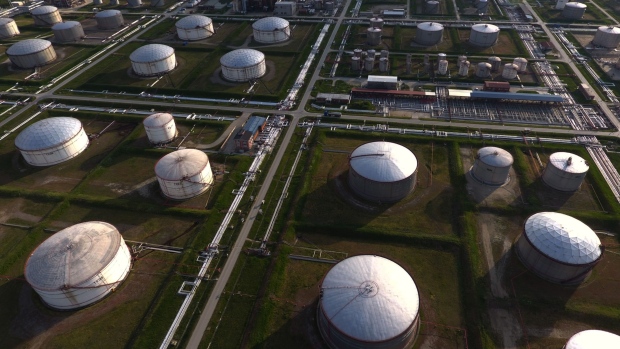Feb 9, 2021
Oil climbs with market structure firming on demand optimism
, Bloomberg News

Oil continued its advance for the seventh straight session on expectations of a strong rebound in demand and as as the dollar weakened.
Futures in New York climbed to above US$58 a barrel, the highest since January 2020 after a choppy trading session Tuesday. The nearest Brent contract sharply widened its premium to the following month, pointing to supply tightness, with inventories shrinking globally and amid expectations of further supply declines in the U.S. A weaker U.S. dollar is boosting the appeal of commodities priced in the greenback.
There are reasons to be cautious of crude’s seven-day rally, which is its longest streak of gains in two years. In an indication of a stretched market, West Texas Intermediate’s 14-day Relative Strength Index is in the most-overbought territory since 2017, while the gauge for Brent is at the highest since 2012.
“The markets are becoming very forward-looking and there’s optimism that we’re going to see a strong rebound in demand,” said Edward Moya, senior market analyst at Oanda Corp. Saudi Arabia’s decision to unilaterally cut production in February and March “was a game-changer, which has removed oversupply concerns in the short term.”
Oil’s surge since the end of October has been underpinned by COVID-19 vaccine breakthroughs and Saudi Arabia’s pledge to deepen production cuts. Slowing virus infections across the globe are raising optimism fuel consumption will continue to climb, while cold weather is pushing demand higher. There are, however, some concerns that higher prices will attract renewed supplies to the market, curbing further rallies.
“There is, to some extent, a limit on the upside to prices,” said Rob Haworth, senior investment strategist at U.S. Bank Wealth Management. “We still have a lot of OPEC supply to come onto the market, and the faster prices go higher, it implies OPEC is going to bring back supply sooner.”
Prices
- West Texas Intermediate for March delivery rose 39 cents to settle at US$58.36 a barrel
- Brent for April settlement gained 53 cents to US$61.09 a barrel, the highest since January last year
U.S. crude inventories are expected to have declined last week, according to a Bloomberg survey, following two consecutive weeks of decreases. The industry-funded American Petroleum Institute will report its inventory figures later Tuesday ahead of U.S. government data on Wednesday.
There are still some concerns the world will find itself short of crude in the not-too-distant future. Total SE sees the risk of a supply crunch in the medium-term stemming from the oil industry’s continued under-investment last year, while “cracks in the U.S. shale model” have also emerged.
Other oil-market news
- A decision on the fate of Energy Transfer LP’s Dakota Access pipeline is facing potential delay after government lawyers sought to postpone a court hearing scheduled for Wednesday.
- Total SE bucked the trend of a disappointing fourth quarter for Big Oil, reporting earnings that exceeded expectations and pledging more cash for cleaner energy.
- Libya’s National Oil Corp. will receive part of a total 9 billion dinars (about US$2 billion) of stopgap funding that will also help other state institutions cover wage bills and medicine, according to people familiar with the matter.
- Winter’s iciest blast is advancing across the U.S., dialing up demand for heating fuels and threatening to set cold-weather records from the Great Plains to the Gulf of Mexico.

